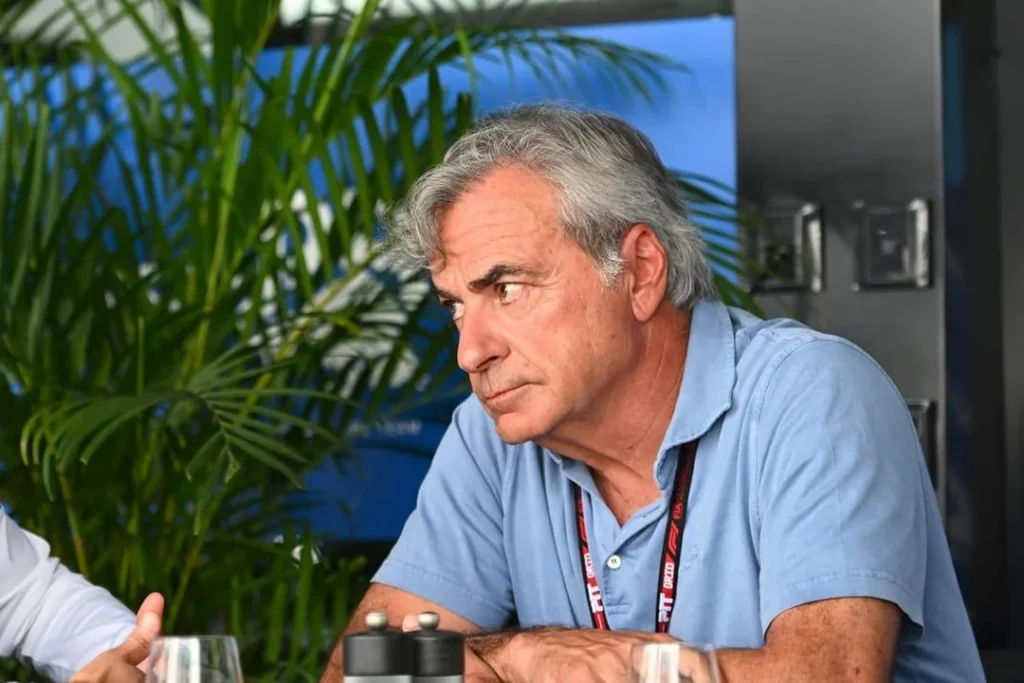
In the past two weeks, the FIA has gone into overdrive, unveiling reforms to driver licensing, aligning itself with technological innovation, and shoring up internal governance structures. Publicly, these moves are framed as modernization. Privately, they read as preemptive positioning from FIA President Mohammed Ben Sulayem, whose grip on power may soon face its most serious challenge yet: a presidential run from rally legend Carlos Sainz Sr.
A Presidency Under Pressure
Sulayem’s latest moves include:
- A major revision to Appendix B of the International Sporting Code, redefining the evaluation criteria for driver licenses.
- A public nod to F1’s new AWS-powered real-time race tracking experience, an innovation technically outside the FIA’s domain but useful for association.
- And behind the scenes, reported efforts to tighten eligibility rules for FIA presidential candidates, effectively limiting outside challengers.
This flurry of activity looks increasingly like an election-year strategy. Sulayem appears keen to reinforce his image as a reformer, while simultaneously closing ranks around his presidency. The strategy is clear: demonstrate progress, control the narrative, and make it difficult for anyone to challenge from the outside.
Enter Carlos Sainz Sr.
The emergence of Carlos Sainz Sr. as a potential challenger has jolted the status quo. In recent interviews, Sainz confirmed he is seriously considering a bid for the FIA presidency, saying: “Now is the time.” It’s not a vanity move, he’s actively consulting national federations and assessing the structure of the FIA from the inside.
And while Sulayem touts governance reforms, Sainz brings racing credibility that few can match:
- 2× World Rally Champion (1990, 1992)
- 3× Dakar Rally Winner (2010, 2018, 2024)
- 97 WRC podiums, 196 stage wins, and decades of respect across disciplines
He’s not just a name, he’s a statesman of motorsport. Sainz is everything Sulayem isn’t: calm, calculated, and respected in every garage. Some analysts feel that Sainz’s rise “feels inevitable.” Many within the community are weary of top-down politics and see Sainz as a return to racing-first leadership. His candidacy signals a rebalancing: from bureaucracy to competition, from personality to principle.
The Appendix B Timing: A Defensive Move?
On May 13, the FIA released an overhaul of Appendix B of the International Sporting Code. The updates are aimed at clarifying disciplinary processes, improving consistency, and emphasizing fairness.
Key changes include:
- Maximum fines for drivers halved, from €10,000 to €5,000.
- Suspended penalties now available for first-time offenders in certain cases.
- Clearer distinction between regulated press conference comments and spontaneous race-day remarks.
- Abuse of officials now triggers sporting penalties instead of monetary fines.
- Mitigating circumstances are to be formally considered when issuing penalties.
- Racial and discriminatory behavior remains firmly punishable, with zero tolerance.
While these reforms are positioned as part of a broader modernization push, several observers view the timing as strategic. This isn’t just about fairness, it’s about optics. The framing tries to reinforces Sulayem’s self-image as a reformer, even as behind the scenes he faces discontent from both F1 stakeholders and national motorsport bodies.
There’s an irony in the revisions: they were implemented by Ben Sulayem himself.
Rallying the Community: Sainz’s Broader Appeal
What makes Sainz such a compelling threat isn’t just his credentials, it’s how widely respected he is across the motorsport ecosystem. While Sulayem’s term has been marked by tension with Formula 1 stakeholders (especially Liberty Media), Sainz is seen as a unifier.
James Vowles, team principal at Williams, commented publicly that “Carlos would be a good fit” for the presidency. That sentiment is echoed not just in the paddock but across fan communities. He’s raced everything, won everywhere, and stayed out of the politics. That’s the guy you want leading.
Another insight surfaced repeatedly online: Sainz’s bid could be a rare case where the sporting side and the fan base are actually aligned. His brand of leadership is viewed as steady and respectful, not flashy, not divisive. In the post-Masi, post-interventionist era, that matters.
A Presidency by Process or Popularity?
Sulayem has tried to position himself as a modernizer, but the sentiment emerging from Reddit and broader motorsport forums is that he’s lost the room. His perceived micromanagement, misalignment with F1’s commercial goals, and lack of transparency have created a credibility gap. Sainz doesn’t need to run on “change.” The status quo is doing that for him.
There’s also a deeper philosophical divide at play:
- Sulayem’s approach: centralize governance, control optics, and speak the language of administration.
- Sainz’s proposition: return to motorsport’s roots, run by racers, not regulators.
The next FIA president shouldn’t need media coaching. He should need a helmet rack.
Conclusion: The Battle Lines Are Drawn
The FIA finds itself at a crossroads. Its current president is sprinting through reforms, aligning himself with innovation, and tightening his grip. But the shadow of a challenger looms large, and Carlos Sainz Sr. represents something deeply appealing: credibility, calm, and clarity of purpose.
Whether or not Sainz runs, the current moment reveals a shift in what fans and insiders expect from the FIA. It’s no longer enough to say the right things. Leadership, like racing, is about execution under pressure.
If this were a race, Sainz wouldn’t just be catching Sulayem, he’d already be in DRS range.
